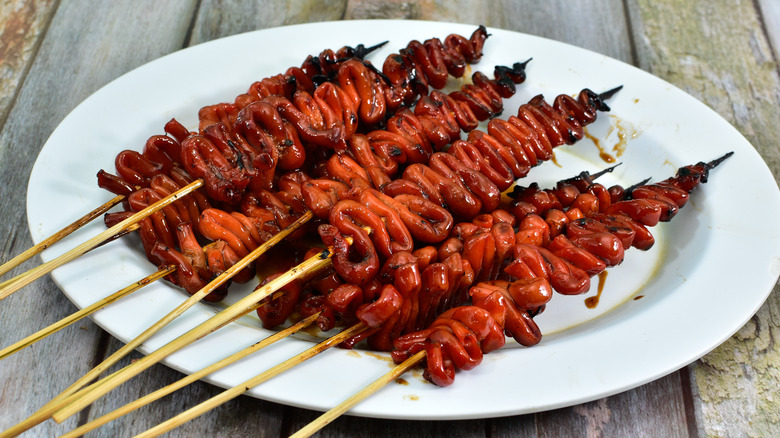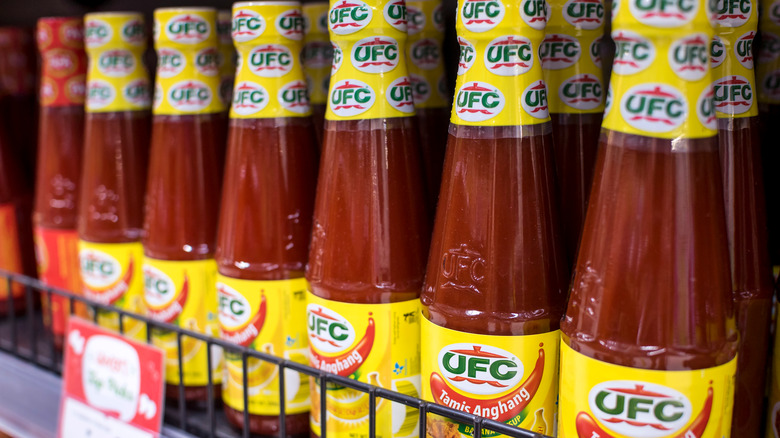Give Banana Ketchup A Chance On Your Next Pork Dish
While you've probably never seen the words banana and ketchup used in the same sentence, let alone recipe, it's actually a common condiment in the Philippines. As the name suggests, banana ketchup swaps tomatoes with bananas, using their sugary, overripe pulp instead of tomatoes and sugar as the foundation for aromatics, spices, and vinegar.
Banana ketchup is sold bottled in the Philippines, and at first glance, it looks exactly like ketchup thanks to artificial food dye. Banana ketchup has the same utilities as its tomato-based counterpart; the bananas act as both a sweetener and textural component to which a wealth of spices, aromatic powders, and vinegar are added to assimilate the tangy and sweet profile of tomato ketchup. While banana ketchup doesn't taste like tomatoes, it doesn't taste like banana, either.
One of the most popular uses of banana ketchup is as a glaze or marinade for barbecued pork ribs or a cooking sauce for slow cooker pork. It's the perfect sweet and tangy complement to pork's robust umami flavor. Plus, it's only one of the ingredients in a marinade that you can balance with soy sauce, fresh aromatics, and chilies for a more well-rounded profile.
While banana ketchup isn't a common bottled product in Western grocery stores, you can make it at home by stewing banana pulp with onions, garlic, ginger, vinegar, and allspice. Some recipes even include soy sauce, tomato paste, diced jalapeno, and a splash of rum for a richer depth of flavor.
History of banana ketchup in the Philippines
The age-old adage "necessity is the mother of invention" certainly applies to the creation of banana ketchup. Tomato ketchup had been a popular condiment since the turn of the 20th century in the Philippines thanks to American colonization. However, World War II had all but eliminated American exports, and the Philippines' tropical climate wasn't suitable for tomato cultivation. Bananas, on the other hand, were a plentiful and successful tropical crop.
The famed Philippine heroine, innovator, and recipe creator Maria Orosa used the tropical climate and local crop availability to her advantage by substituting bananas for tomatoes. Orosa is credited with creating over 700 recipes using local ingredients, many of which helped the Philippine soldiers and general populations survive wartime food scarcity and eventually gain their independence from Japanese occupation.
To convince Phillipinos of banana ketchup's worthiness as a tomato ketchup substitute, Orosa and manufacturers employed red food dye to create the illusion of the condiment they were used to. Banana ketchup's popularity soared during World War II and remains a mainstay of Philippine cuisine that rivals tomato ketchup in popularity. A bottle of banana ketchup is a staple at restaurants and kitchen tables to spread over burgers, drizzle over french fries and omelets, and incorporate into barbecue marinades and spaghetti sauces.

